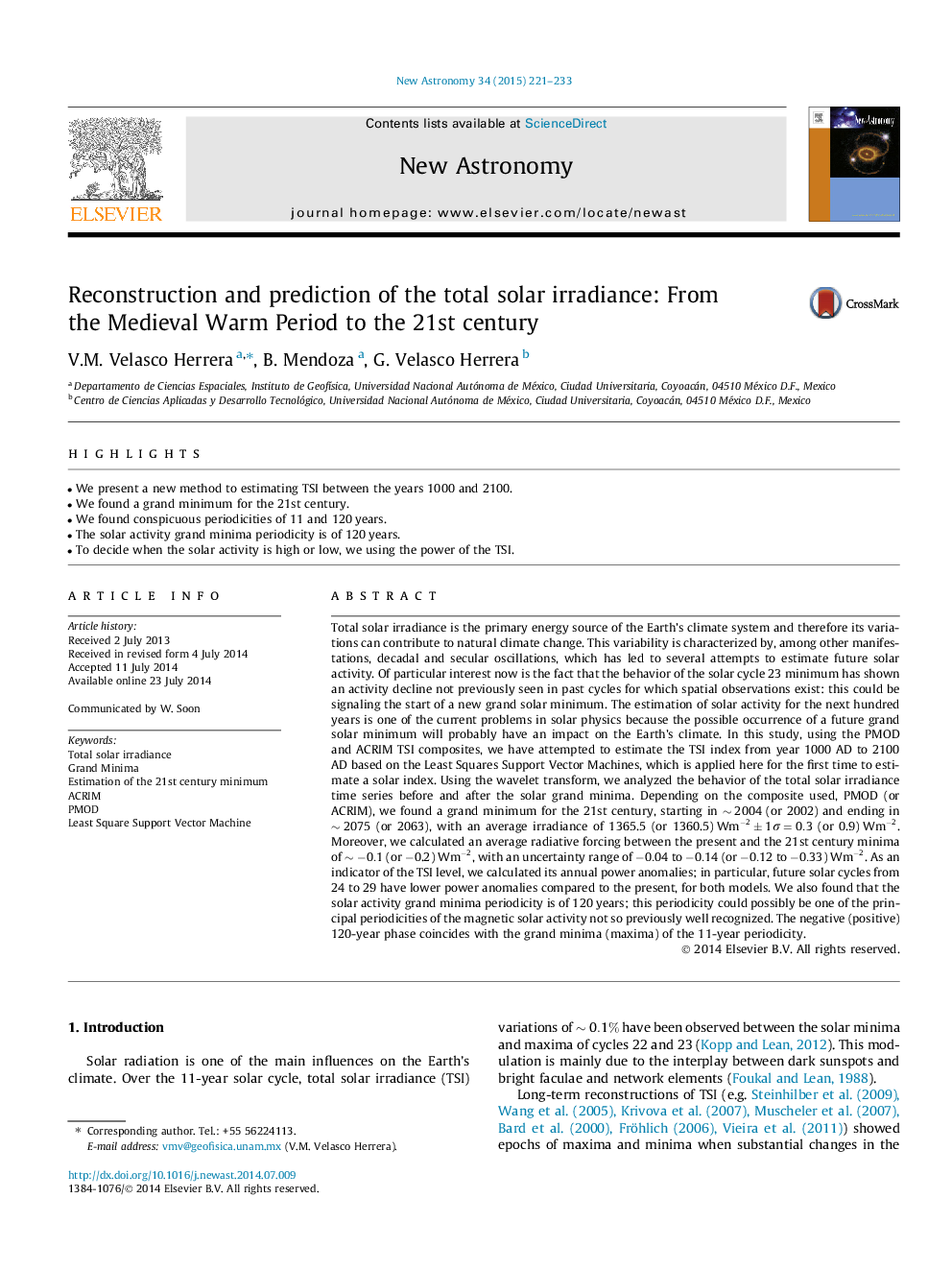| Article ID | Journal | Published Year | Pages | File Type |
|---|---|---|---|---|
| 1778979 | New Astronomy | 2015 | 13 Pages |
•We present a new method to estimating TSI between the years 1000 and 2100.•We found a grand minimum for the 21st century.•We found conspicuous periodicities of 11 and 120 years.•The solar activity grand minima periodicity is of 120 years.•To decide when the solar activity is high or low, we using the power of the TSI.
Total solar irradiance is the primary energy source of the Earth’s climate system and therefore its variations can contribute to natural climate change. This variability is characterized by, among other manifestations, decadal and secular oscillations, which has led to several attempts to estimate future solar activity. Of particular interest now is the fact that the behavior of the solar cycle 23 minimum has shown an activity decline not previously seen in past cycles for which spatial observations exist: this could be signaling the start of a new grand solar minimum. The estimation of solar activity for the next hundred years is one of the current problems in solar physics because the possible occurrence of a future grand solar minimum will probably have an impact on the Earth’s climate. In this study, using the PMOD and ACRIM TSI composites, we have attempted to estimate the TSI index from year 1000 AD to 2100 AD based on the Least Squares Support Vector Machines, which is applied here for the first time to estimate a solar index. Using the wavelet transform, we analyzed the behavior of the total solar irradiance time series before and after the solar grand minima. Depending on the composite used, PMOD (or ACRIM), we found a grand minimum for the 21st century, starting in ∼2004∼2004 (or 2002) and ending in ∼2075∼2075 (or 2063), with an average irradiance of 1365.5 (or 1360.5) Wm-2±1σ=0.3Wm-2±1σ=0.3 (or 0.9) Wm-2Wm-2. Moreover, we calculated an average radiative forcing between the present and the 21st century minima of ∼-0.1∼-0.1 (or −0.2) Wm-2Wm-2, with an uncertainty range of -0.04-0.04 to -0.14-0.14 (or -0.12-0.12 to -0.33-0.33) Wm-2Wm-2. As an indicator of the TSI level, we calculated its annual power anomalies; in particular, future solar cycles from 24 to 29 have lower power anomalies compared to the present, for both models. We also found that the solar activity grand minima periodicity is of 120 years; this periodicity could possibly be one of the principal periodicities of the magnetic solar activity not so previously well recognized. The negative (positive) 120-year phase coincides with the grand minima (maxima) of the 11-year periodicity.
